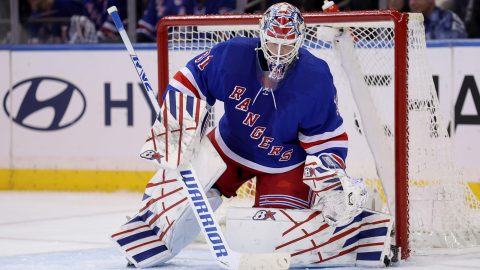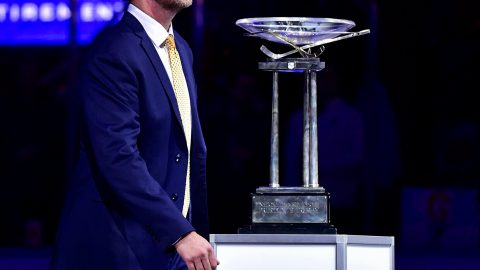Let's conclude our season-ending series on which players our stats consider to be lucky and unlucky players by focusing today on jinxed pitchers.
To isolate pitching luck, we look at strand rate because, generally, pitchers' success or failure here does not repeat year to year to the same degree as broader stats like strikeouts, walks and baserunners allowed. We also isolate the percentage of homers on fly balls for the same reason — wide variation from the league average of about 10.5 percent is common. And we assess a pitcher's defensive efficiency ? the percentage of balls in play (not including homers) that become hits. The average batting average on balls in play (BABIP) is about .300.
This year, we're also going to project the most disappointing extreme pitchers ? those who were top 10 in highest ground ball and fly ball percentage. Our friend and colleague Gene McCaffrey of WiseGuyBaseball.com noted this spring in his baseball annual that these pitchers tend to perform much better than average and we agree. So, who among the most extreme unexpectedly struggled? We'll bet on them for next year, too.
We do this to further my much considered but never attempted "Portfolio S" strategy. The idea is to draft a team based on last year's values as long as the players have the same job and are not compromised by injury. Age is a marginal consideration since one year shouldn't matter too much from one season to the next.
The objective with Portfolio S is to exploit the market's overconfidence in tethering expected future value to the most recent past results.
First let's test of our underlying assumptions by looking at the pitchers we labeled as unlucky at this time last year — Justin Verlander, Jonathan Sanchez, Josh Beckett, Ian Snell, Bronson Arroyo, Aaron Harang, Roy Oswalt, Carlos Silva and Nate Robertson.
Silva and Robertson missed most of the year with injury. Oswalt's homer rate from last year essentially repeated and thus was not the outlier it seemed. Harang's homer rate decreased exactly as we expected, with a resulting ERA gain of about a half run. Arroyo's BABIP allowed has decreased as predicted — from an unlucky .314 to a lucky .268. Snell's BABIP also declined, but not enough to overcome his poor control. Beckett's BABIP was gone from .315 to .286, about exactly what we expected. I said Sanchez's ERA would go from the low 5.00s to the low 4.00s with average luck and it has. And the biggest hit of course was saying that Verlander's high strand rate was a fluke and not due to any lack of intestinal fortitude; it's sunk from 35 percent of baserunners scoring to 27 percent.
That's solid forecasting performance. Let's see if we can replicate it this year by putting "Buys" on all of the following unlucky pitchers.
Ricky Nolasco, Marlins: He hasn't held his gains after the terrible start as we expected. His post-All-Star ERA is 4.78 despite allowing a .238 average against with 89 Ks and just 21 walks in 86.7 innings. He's stranding 61 percent of baserunners for the season. Last year, he stranded 76 percent.
Brett Anderson, A's: Here's another guy with a bad strand rate — 67 percent (average is 71.5). Anderson like Nolasco has a good K-rate and great K/BB ratio — 7.9/2.4. Get him in the middle-to-late round range next year because he very easily can end up a top 10 overall AL hurler.
Scott Baker, Twins: He's been at least a little unlucky almost everywhere. Pitchers with 7.8/2.1 K/BB should be fantasy gold. We also like that Baker is extreme, though it's better to be ground-ball extreme than fly-ball like he is. Still, it's another sign of dominance.
Derek Lowe, Braves: The league hit .324 against him on balls in play. Yes, he's ground ball extreme but he's been much better than league average in BABIP allowed the prior four years. Also, we like extreme pitchers and Lowe was the second most extreme at inducing grounders (Joel Pineiro was first).
Chris Volstad, Marlins: With average defense, his ERA would be 4.42. So use that as a baseline. His HR/FB has jumped from 4.7 to 19.2 percent conversion. Next year, expect an ERA in the high 3.00s and decent Ks.
Ervin Santana, Angels: No way he gives up homers on 15 percent of fly balls next year. He has an ERA of 3.98 after the break with good K/BB despite giving up 16 homers since then. Otherwise, the okay second half would be great.
Jorge De La Rosa, Rockies: His ERA should be about 3.90, not mid-4.00s. He's dominant — over a K per inning. He needs to cut the walk rate down to about 3.5, but it's moving in the right direction. How can you not love a lefty with an average heater of 93.3 mph?



